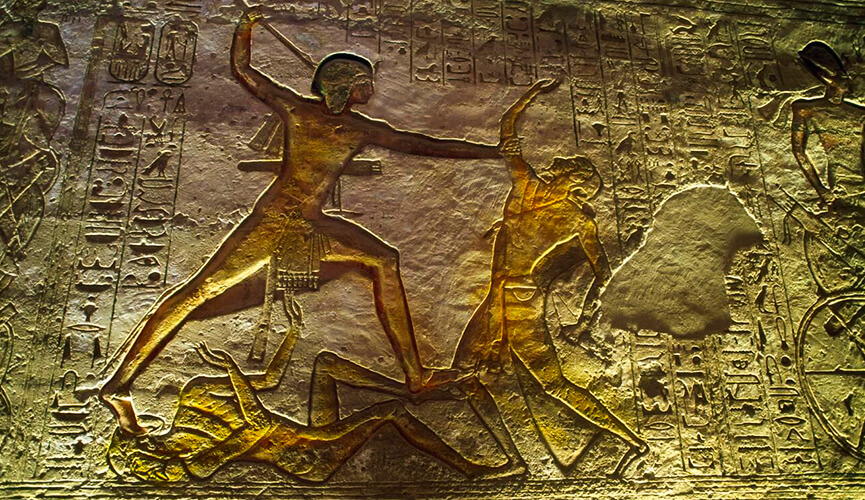The Battle of Kadesh was an essential part of ancient Egyptian Battles and history and is often considered one of the biggest chariot fights ever. It happened around 1274 BCE near the city of Kadesh in Syria. It was a turning point in the power fight between the Egyptian Empire and the Hittite Empire. This fight was significant because it showed how military techniques and war were improving at the time and changed how politics worked in the Bronze Age.
Ramses II of Egypt and the Hittite Empire were two of the most influential people in this vast war. Ramses II was one of Egypt’s most famous pharaohs. He was also called Ramses the Great. He became king when he was young and ruled for an incredible 66 years, during which Egypt’s land and power grew considerably. Ramses II was known for his big building projects, like making temples and figures, the most famous of which were the temples of Abu Simbel.
Egypt’s foe, the Hittite Empire, was on the other side of the fight. The Hittites were a robust society in Anatolia. They were known for their military strength and ability to plan. They had become a significant power in the area, which put Egypt’s rule over the Levant in danger. The Hittite Empire, led by its king Muwatalli II, was a big problem for Ramses II and his plans.
Both Ramses II and the Hittites wanted to control the vital city of Kadesh, so it was natural that they would fight at Kadesh. The battle was mainly fought with chariots, which showed how both sides devised new fighting methods. Even though the fight didn’t have a clear winner, both Ramses II and the Hittite Empire said they won, which shows how vital the battle was.
The Battle of Kadesh changed the course of events in many ways. It gave the Egyptians and Hittites a careful balance of power, which led to a peace deal between Ramses II and the Hittite king. This pact called the Treaty of Kadesh, is thought to be the oldest peace deal ever written down. It also marked a significant change in the way foreign relations worked. In addition, the battle showed how complicated war was in the Bronze Age. It showed how vital strategy, tactics, and new technology were in old military operations. Historians are still interested in the Battle of Kadesh and how Ramses II and the Hittite Empire were involved. This is because it shows how complicated the relationships between old societies were.
Historical Context of the Battle of Kadesh
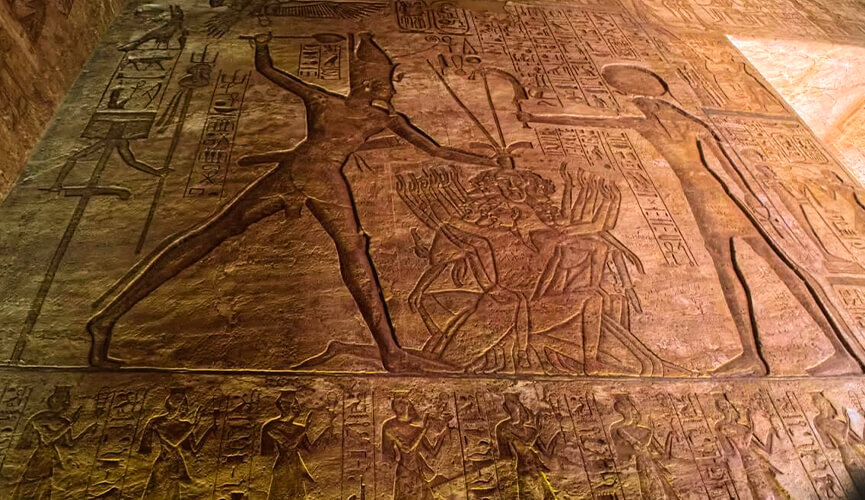
A. The Hittite Empire’s rise to power and influence in the region:
- During the Late Bronze Age, the Hittite Empire, also called the Hittite Kingdom, became a significant power in the ancient Near East. The Hittites came from Anatolia, which is now Turkey. They slowly grew their land and power in the area. By the time of the Battle of Kadesh in the 13th century BCE, the Hittites were a strong force with a well-organized army and a complex government.
- One of the main reasons for the Hittite Empire’s rise to power was its ability to make iron. This gave them more advanced technology than many of their neighbors. The Hittites made better guns and protection because of this new idea. This gave them a significant edge on the battlefield. Also, their partnership with the strong Mitanni Empire ensured their eastern borders were safe, so they could focus on growing westward.
B. Ramses II’s reign and the expansion of the Egyptian empire:
- During the same time, Egypt was ruled by Ramses II, the third king of the Nineteenth Dynasty. Ramses II, also called Ramses the Great, is remembered for his war victories and building projects. During his time in charge, Egypt grew and became very wealthy.
- Ramses II tried to strengthen his power over ancient Egypt. He wanted to ensure its borders were safe and protect its economic interests. He went on many war missions during his rule and often fought with nearby powers like the Hittites. Ramses II also took great pride in leaving a long-building heritage. He built beautiful shrines and huge figures that showed the power and grandeur of Egypt.
C. Tensions and fights over land that led to the Battle of Kadesh:
- The Hittite Empire and the Egyptian Empire were fighting over land and getting increasingly angry, which led to the Battle of Kadesh, one of the most critical military battles in ancient times. As both forces tried to gain more power, they moved into each other’s areas, which led to many fights and battles.
- One of the most significant disagreements between the two powers was who should control the city of Kadesh, which was in a good spot on the Orontes River. The Hittites had claimed the city, but Ramses II wanted to show that Egypt was in charge, so he sent an army to take it.
- Tensions worsened when Egypt said the Hittites helped rebels in their satellite states fight against Egyptian rule. This charge made Ramses II even more determined to fight the Hittites and regain control of the area from the Egyptians.
- The Egyptian forces of Ramses II and the Hittite army fought a long and fierce battle at the Battle of Kadesh. This battle was a turning point in the history of the old world. The result of this meeting would change the balance of power in the area for years to come.
Events Leading to the Battle of Kadesh
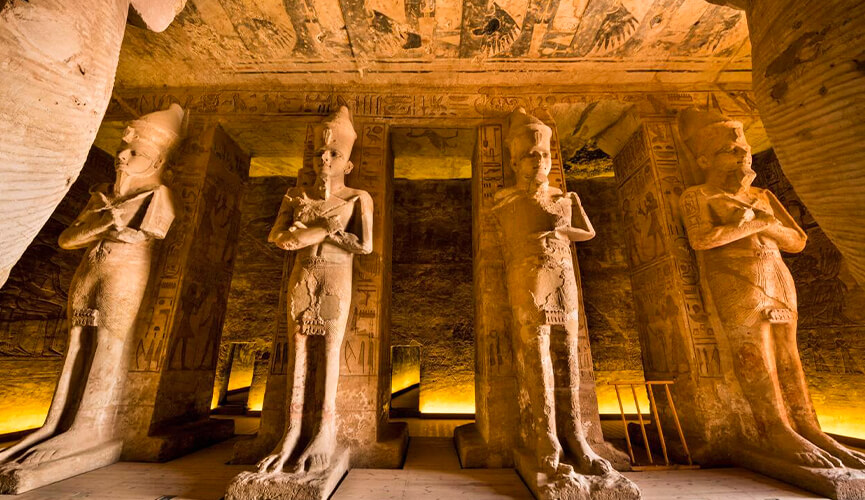
Ramses II and the Hittite Empire fought at the Battle of Kadesh in the 13th century BC. It was a massive battle between two strong powers. Before the actual fight, several things happened that set the stage for this exciting showdown.
A. Political moves and international attempts before the war:
In the years before the Battle of Kadesh, the Hittite Empire, and the Egyptian Empire were involved in a complicated web of political maneuvering. Both countries wanted to grow their territory and power in the area, which led to conflict and a slow breakdown of international ties. Each side negotiated with different nearby states to get help and keep their opponents from getting the upper hand. The political grid was set, and these moves clarified that a fight would happen.
B. Military plans and preparations of Ramses II:
Ramses II, the king of Egypt, saw that things were worsening with the Hittites and started preparing for war. He knew the importance of having the best military, so he did a lot to improve his army. Ramses II, known for his big building plans, used resources to strengthen the Egyptian forces. He got Egyptian troops and freelancers from other countries to join his army and trained them well. Ramses also devised new fighting methods, like dividing his army into smaller groups to make moving around on the battlefield easier. His careful planning and building up of his army showed how ready he was for the upcoming fight.
C. Information from the Hittites and their reaction to the Egyptian plans:
During this time, the Hittite Empire, led by King Muwatalli II, was aware of Ramses II’s growing power and military plans. The Hittite intelligence network worked hard to learn about the Egyptian military’s moves, which gave them essential knowledge about their strategies and skills. The Hittites made innovative war plans because they knew they had to be as strong as the Egyptians. King Muwatalli II told his troops to get ready. He assembled a vast army with chariots, foot soldiers, and friends from other areas. The Hittites’ reaction to Ramses II’s plans showed how flexible and able to change they were. This set the stage for a remarkable battle that would be remembered forever.
In short, the events leading up to the Battle of Kadesh show that the Egyptian and Hittite powers made careful plans, moves, and diplomacy efforts. Political scheming, military strategies, and collecting information put these two great powers on a path to meet, setting the stage for a huge battle that would decide the fate of these empires and change the direction of history.
Ramses II and the Hittite Empire fought at the Battle of Kadesh
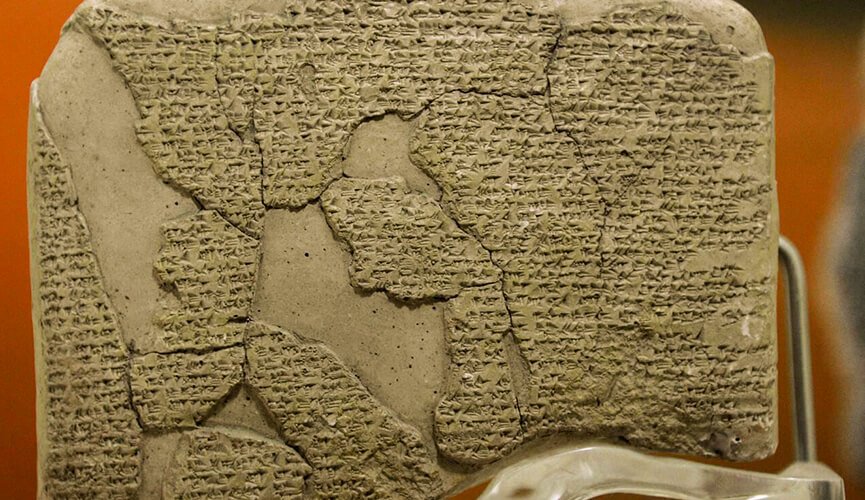
A. Detailed summary of the fight and its most important events:
- The great king Ramses II and the mighty Hittite Empire fought in the Battle of Kadesh in 1274 BCE. It was a crucial battle. Both groups wanted to take control of the critical city of Kadesh near the Orontes River in Syria. The fight lasted for several days, and how it ended changed the balance of power in the area in many ways.
- Ramses II led his massive Egyptian army toward Kadesh, thinking it was an undefended city. This was where the battle started. But he didn’t know that the Hittite army, led by King Muwatalli II, was hiding nearby and ready to attack. Hittite chariot forces suddenly circled the Egyptian troops as they moved into the tight and dangerous area around the city.
B. The strategies and methods each side used during the battle:
- He used complex plans and moves during the Battle of Kadesh, Ramses II, and King Muwatalli II. Ramses II, known for how good he was at war, split his army into four groups led by trusted leaders. This gave them more options and helped them act faster on the battlefield. Ramses II also used a “flying column,” a quick-response force that could be sent to help suffering units or take advantage of gaps in the enemy’s lines.
- On the other hand, King Muwatalli II put his Hittite men in a circle shape to surround the Egyptian forces. The Hittites could keep a strong front and strike from different directions with this structure. The most important part of the Hittites’ strategy was how well they used their famous war chariots, which caused chaos and confusion in the Egyptian lines.
C. Analysis of the battle’s outcome and its immediate aftermath:
- Even though the Hittites attacked unexpectedly at first, neither side transparently won the Battle of Kadesh. Ramses II was a great leader because he could gather his troops even when they were about to lose. Both forces lost a lot of people in the battle, which finally came to a standstill. Ramses II and King Muwatalli II had to look for a political answer instead of trying to win straight.
- Even though the Battle of Kadesh didn’t end in a clear military victory, it was a turning point in the ancient Near East. It forced the Egyptians and Hittites to see their enemy’s strength and understand that negotiation could be an excellent way to solve problems. After the fight, peace deals were made between the two sides, bringing relative calm to the area.
- Even though the Battle of Kadesh didn’t have a clear winner on the ground, it would change politics for years to come. Ramses II and the Hittite Empire emerged from the war with a new respect for each other’s armed power and an understanding that talking is better than fighting forever.
Battle of Kadesh Significance and Legacy
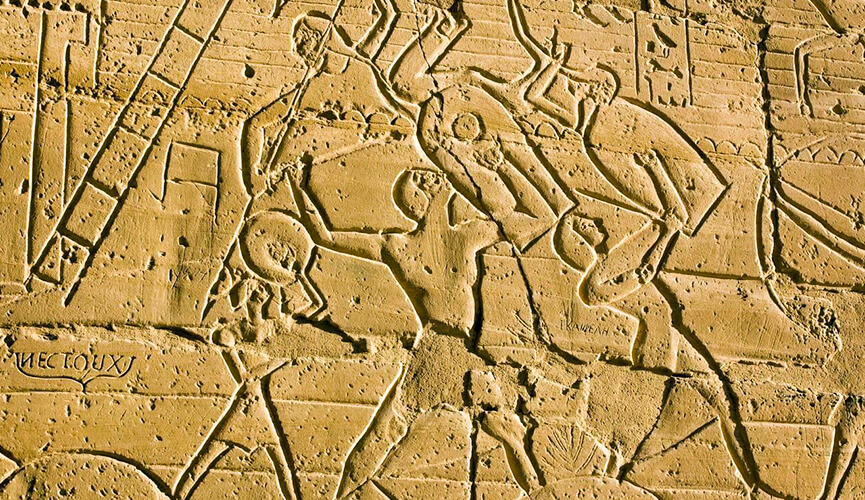
- First, it changed the balance of power in the area in a big way. Before the fight, the Hittite Empire was gaining more land, which made it hard for Egypt to keep control of the eastern Mediterranean. But Ramses II’s win at Kadesh stopped the Hittites from moving forward and put things back in balance. This fight stopped the Hittites from taking over more land and ensured that Egypt would rule the area for a long time.
- Second, the Battle of Kadesh was essential to Ramses II’s impact. Ramses II became known as a great fighter king and military planner after his win at Kadesh. People respected him for being brave and a good leader; his name came to mean success. Ramses II was one of Egypt’s most famous Pharaohs because of his military achievements, especially his victory at Kadesh. On the other hand, the fight was the start of the Hittite Empire’s fall. Because they couldn’t beat Ramses II, they lost some of their power, leading to the fall of the Hittite Empire in the following centuries.
- Lastly, you can’t say enough about how important the Battle of Kadesh was to old culture and history. This battle between two big powers showed how far military technology and strategy had come at the time. It was a critical event that changed how politics worked in the area. Also, writings and reliefs give much information about the fight, making it one of the best-known combat clashes in ancient history. These sources tell us a lot about how both groups used combat techniques, weapons, and political strategies. The Battle of Kadesh has become a critical case study for scholars and military planners because it shows how complicated war and diplomacy were in the past.
Ultimately, the Battle of Kadesh significantly affected the balance of power in the area, cemented Ramses II’s reputation as a respected Pharaoh, and marked the start of the Hittite Empire’s fall. Also, its culture and historical importance is still felt in the old world, and it is a great way to learn about the war tactics and political efforts of the past.
Archaeological Discoveries and Insights
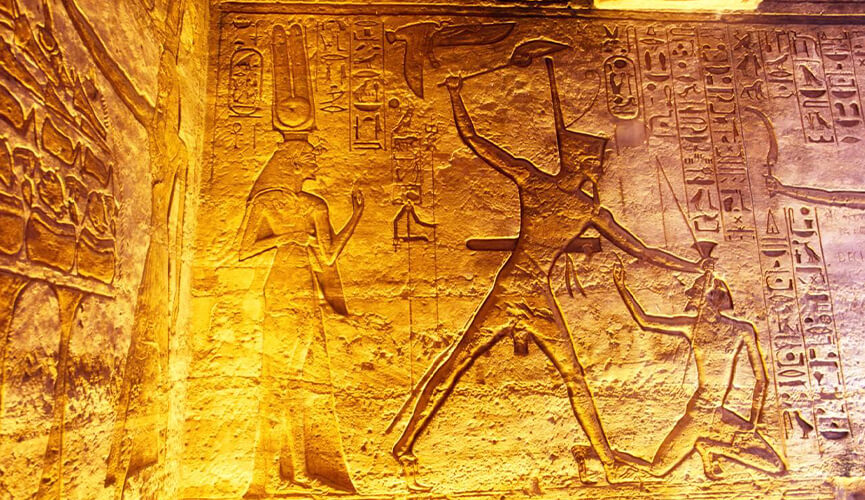
A. Summary of what archaeologists have found about the Battle of Kadesh:
- The Egyptian king Ramses II and the Hittite Empire fought in the Battle of Kadesh. It is one of the most critical fights in ancient history. Archaeological finds have helped us learn more about what happened before and during this fight. Archaeologists have found many objects and writings that tell us much about the battle at places like Kadesh and Megiddo.
- In the Egyptian capital of Kadesh, archaeologists have found detailed reliefs and writings on the walls of temples that show Ramses II’s grand vision of the battle. These pictures show the Egyptian king coming into action, the powerful lines of chariots, and fierce fighting scenes.
- At Hattusa, the city of the Hittites, writing war records have been found. These tablets give essential information about the fight from the Hittite point of view. They offer an alternative story to Egyptian records. The Hittite papers describe the strategic moves, problems, and, ultimately, the agreement between the two forces.
B. How these discoveries have enhanced our understanding of the battle:
- Archaeological discoveries about the Battle of Kadesh have helped us learn more about this critical battle. With the help of the reliefs and texts found at Kadesh, we can see what the fight looked like and picture how big and important it was. The detailed picture stories show how advanced ancient Egyptian military plans were and how vital chariot warfare was. They also offer some of the weapons and clothes that both sides used.
- The written Hittite records found at Hattusa give us a complete picture of the fight. They show how the Hittites saw what was going on, which helps scholars make a more complex and complete story. These texts show how the Hittite king Muwatalli II and his generals made tactical choices, disproving what was thought before about their military skills.
- Also, putting together the Egyptian and Hittite stories gives us a complete picture of the fight, considering both sides’ different goals, biases, and lies. By looking at the other levels, scholars can figure out what led to the fight’s result and learn more about the political, cultural, and military situations at the time.
In the end, the things archaeologists have found about the Battle of Kadesh have helped us learn more about this important event in ancient history. The reliefs and engravings found at Kadesh and the writing records found at Hattusa have shown us more than ever about Ramses II, the Hittite Empire, and their troops’ plans, tactics, and experiences. These findings give us a good look into the long-ago past and help us assemble the puzzle pieces of this famous battle.
Conclusion
The Battle of Kadesh, which happened in 1274 BCE, is one of the most critical events in history. It was a significant change in the relationship between Ramses II’s ancient Egypt and the mighty Hittite Empire. This fight, near the city of Kadesh on the Orontes River, showed how good Ramses II was as a soldier and how both sides used their political skills to find a peaceful settlement.
The Battle of Kadesh was important because it showed how strong the Egyptian army was under Ramses II. It was the biggest chariot battle ever recorded, with tens of thousands of horses and men fighting hard. In the classic story, Ramses II won, but new research suggests that the battle ended in a draw. No matter what happened in the end, the fight showed how brave and intelligent Ramses II was, making him a significant person in ancient Egyptian history.
One of the most important things about the Battle of Kadesh is how it changed the story of Ramses II and the Hittite Empire. When these two strong nations fought, it set the stage for how they would deal with each other in the future. After the fierce fight, both Ramses II and Muwatallis, the emperor of the Hittites, saw the need for peace. This led to the Treaty of Kadesh, one of the oldest peace agreements we know about. It set a standard for how ancient societies could negotiate peace.
The Treaty of Kadesh stopped the fighting and brought peace and wealth to the area. It made it easier for the Hittites and Egyptians to trade and share their cultures, which boosted the economy. This peace pact also set a standard for future international talks and affected how other societies looked for calm answers to their problems.
Ultimately, the Battle of Kadesh is a significant historical event. Not only did it show how good a soldier Ramses II was, but it also showed how critical political talks were for ending wars. The battle and the peace pact that followed helped the Hittite Empire and Egypt become more stable and grow their economies. Ramses II and the Hittite Empire will always be linked to the story of the Battle of Kadesh, which prolonged ancient history and foreign relations.
Egypt is the best place to go on vacation if you want to learn about history and see beautiful places. Egypt has been a favorite vacation destination for hundreds of years because of its rich culture, history, and unique historical sites. Egypt vacation packages are one of the best ways to see this exciting country. These tours not only take care of all the details for you, but they also make sure you get to see the most famous sites, like the Great Pyramids of Giza, the Valley of the Kings, and the beautiful temple of Luxor and Abu Simbel Temple. Also, Egypt Day tours allow you to learn more about Egypt’s ancient history. You can learn about the secrets of the pharaohs and follow their paths. An experienced guide will lead the tour daily and provide crucial information while maintaining your interest. Egypt Nile River cruises are a unique way for people who want to see Egypt’s sights at a slower pace to do so. Sail along the famous River Nile, stopping at historic towns like Aswan and Kom Ombo. You’ll get to see some beautiful scenery along the way. As you relax and enjoy the cruise ship’s excellent features, you’ll also be able to visit sites along the riverbanks and see how the locals live. Whether you choose a vacation package, a day trip, or a cruise on the Nile, Egypt will give you a truly unique experience that you will remember for the rest of your life.

